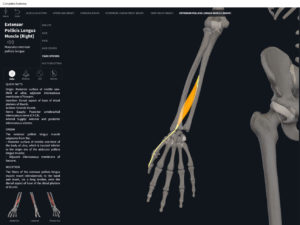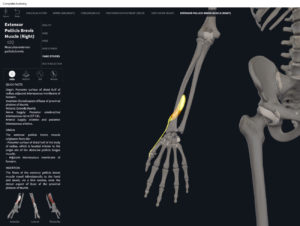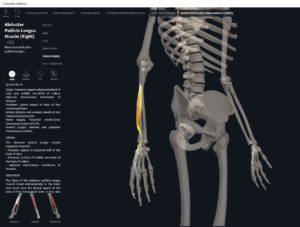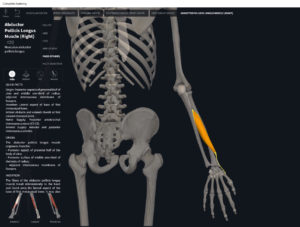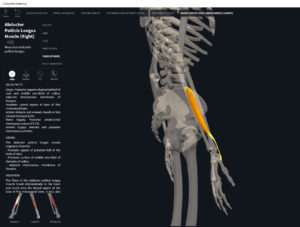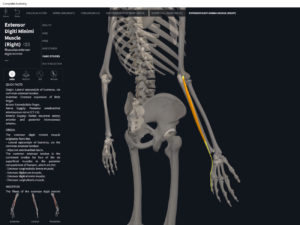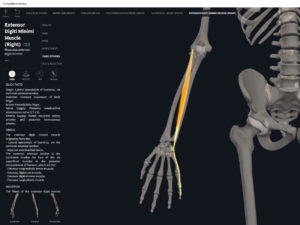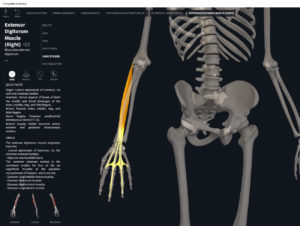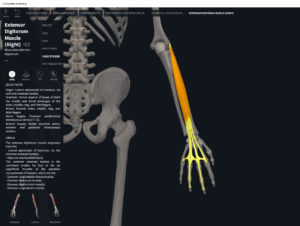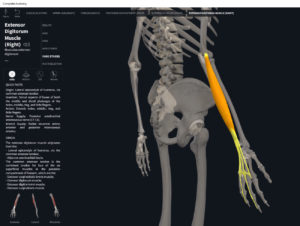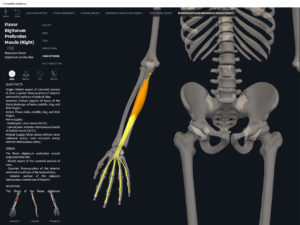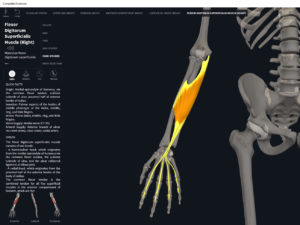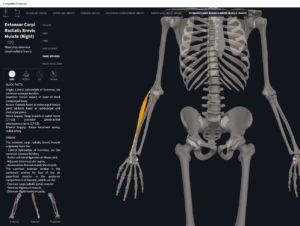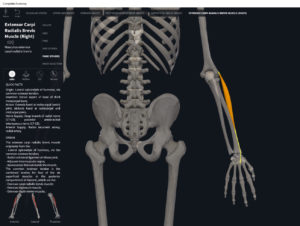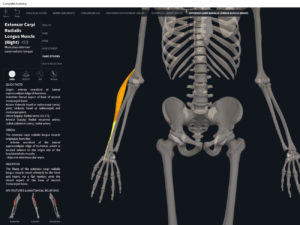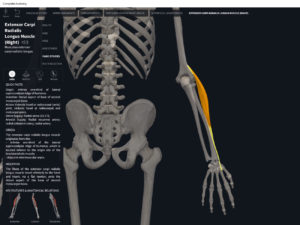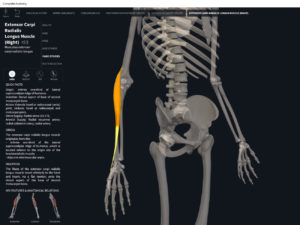Anatomy & Physiology: Muscles—Extensor Pollicis Longus.
Structure.
- Origin: posterior surface of middle of ulna and interosseous membrane.
- Insertion: base of distal phalanx of thumb.
Function.
- One of the deep distal four group.
- Concentric action: extends distal phalanx of thumb at interphalangeal joint, first metacarpal of thumb at carpometacarpal joint, and abducts hand at wrist joint. Lesser: lateral rotation of thumb at CMC; wrist extension; radial deviation; supination; adduction of thumb at CMC.
- Reverse mover action: extend trapezium at CMC; extend 1st metacarpal at MCP; extend proximal phalanx at IP joint; medial rotation of trapezium; wrist extension; radial deviation; supination; medial rotation at shoulder; trapezium adduction at CMC.
- Eccentric action: controls/restrains/slows flexion at CMC, MCP and IP of thumb; medial rotation of metacarpal and lateral rotation of trapezium at CMC; wrist flexion; ulnar deviation; pronation; abduction of CMC at thumb.
- Isometric action: stabilize CMC, MCP, IP; wrist; radioulnar joints.
- Innervation: deep radial nerve.
- Arterial supply: posterior interosseus artery; perforating branches of anterior interosseus artery.
Clinical Significance.
References
Biel, A. (2015). Trail guide to the body: A hands-on guide to locating muscles, bones and more.
Cedars-Sinai. (2018). Vertebrae of the spine. Retrieved from https://www.cedars-sinai.org/health-library/diseases-and-conditions/v/vertebrae-of-the-spine.html
Clark, M., Lucett, S., Sutton, B. G., & National Academy of Sports Medicine. (2014). NASM essentials of corrective exercise training. Burlington, MA: Jones & Bartlett Learning.
Jenkins, G., & Tortora, G. J. (2012). Anatomy and Physiology: From Science to Life, 3rd Edition International Stu. John Wiley & Sons.
Muscolino, J. E. (2017). The muscular system manual: The skeletal muscles of the human body.
